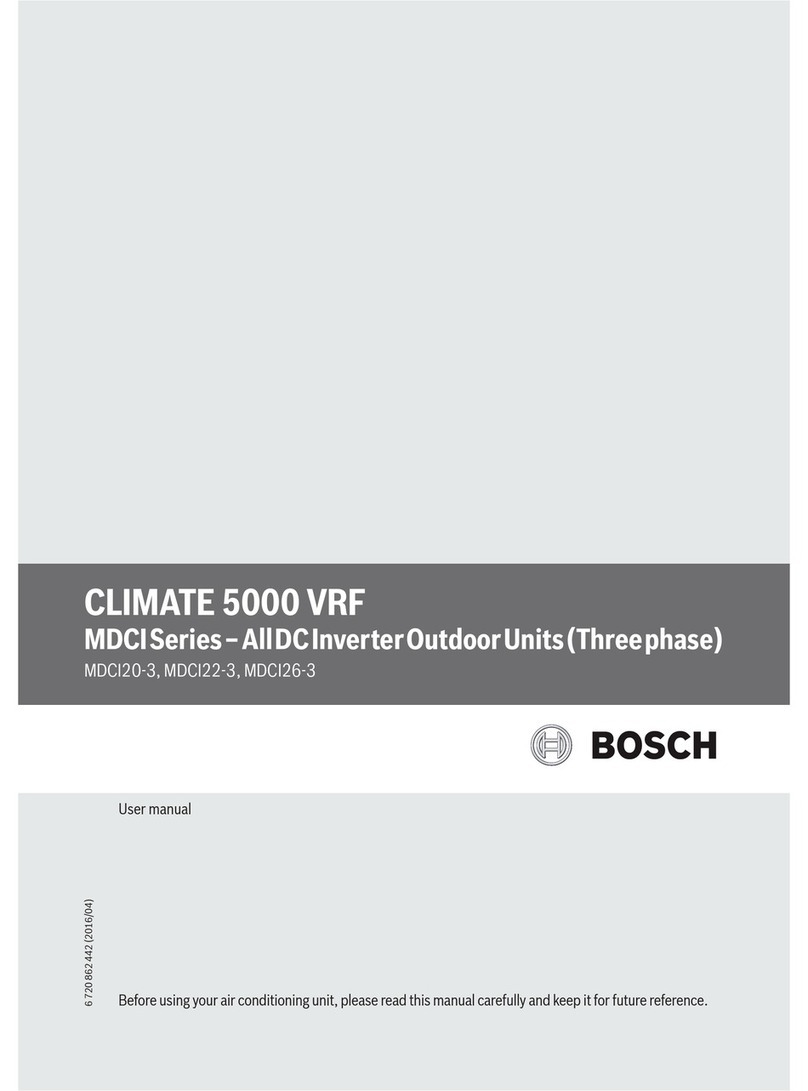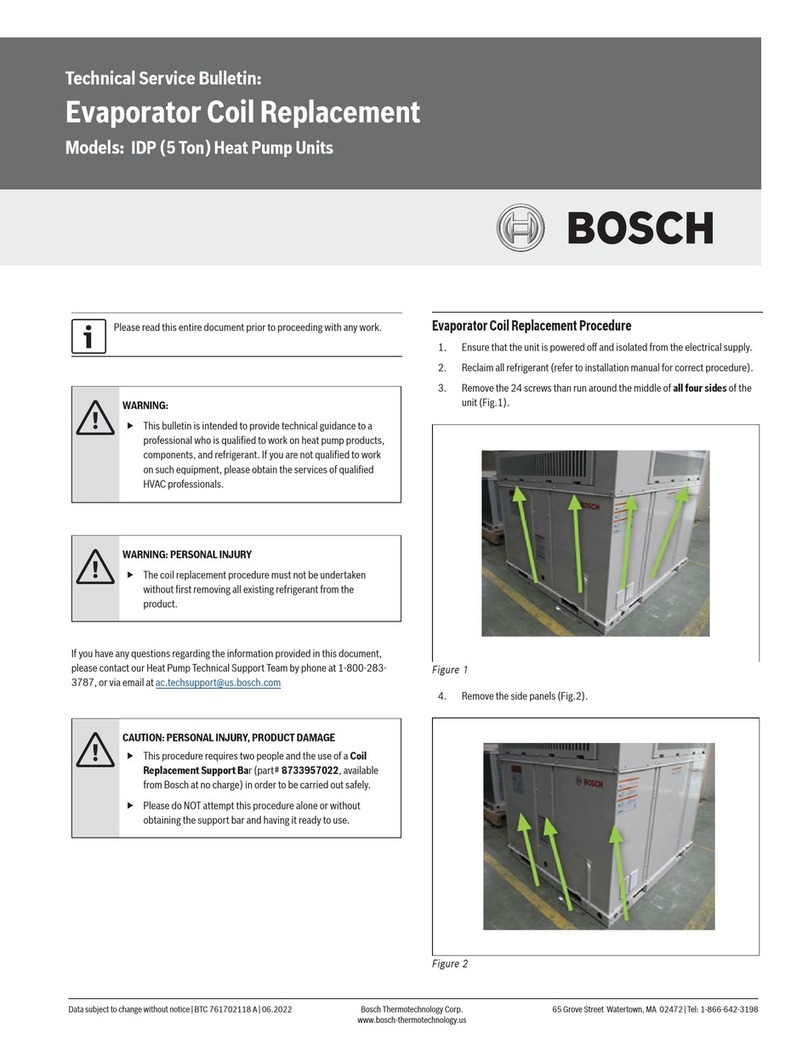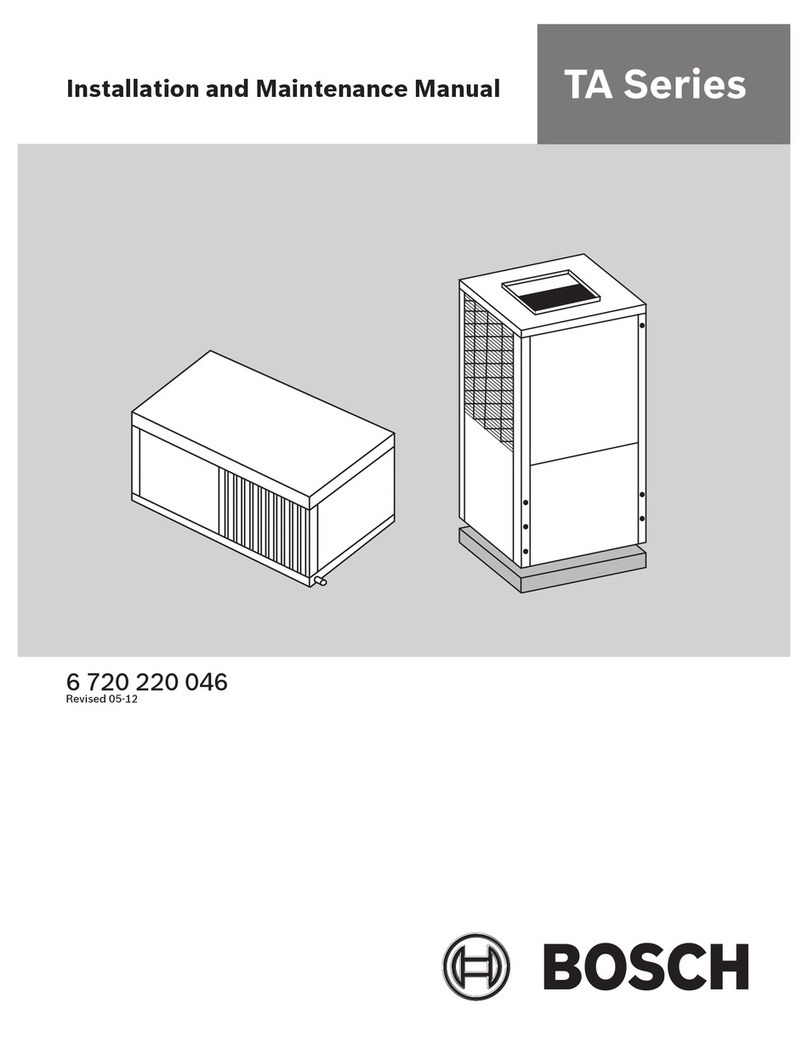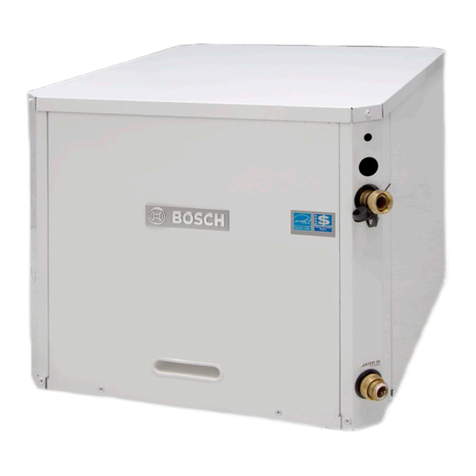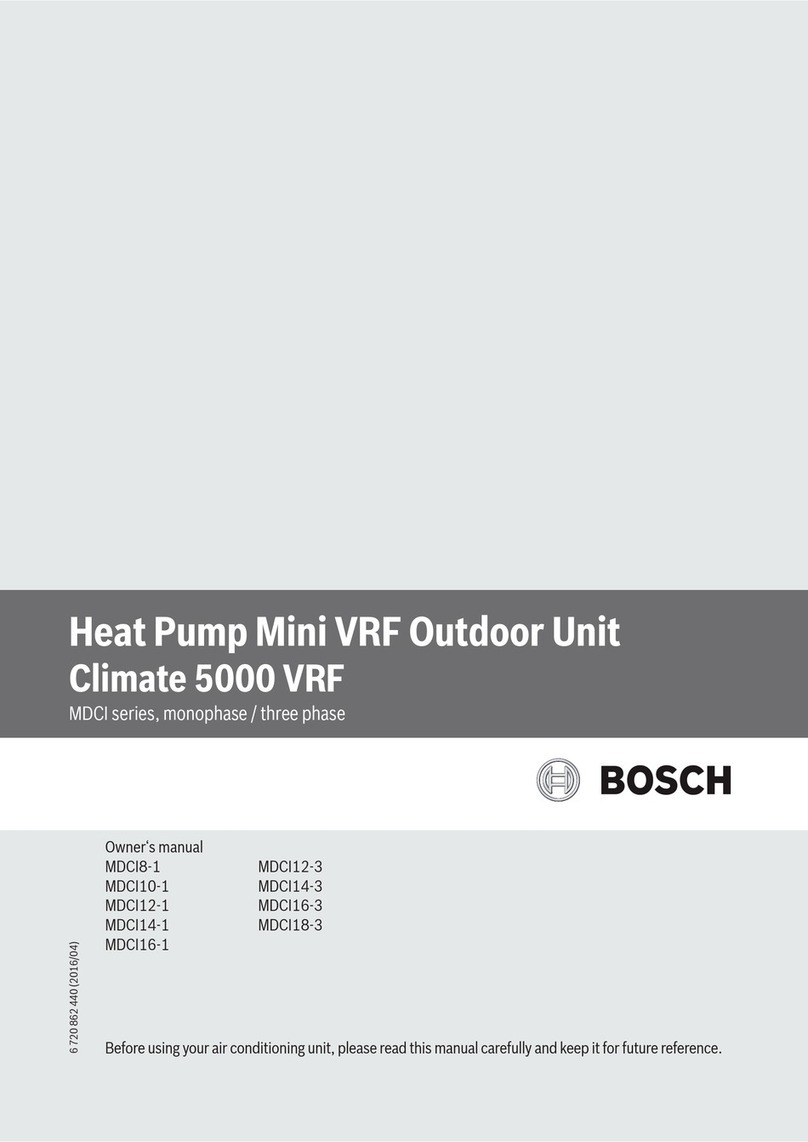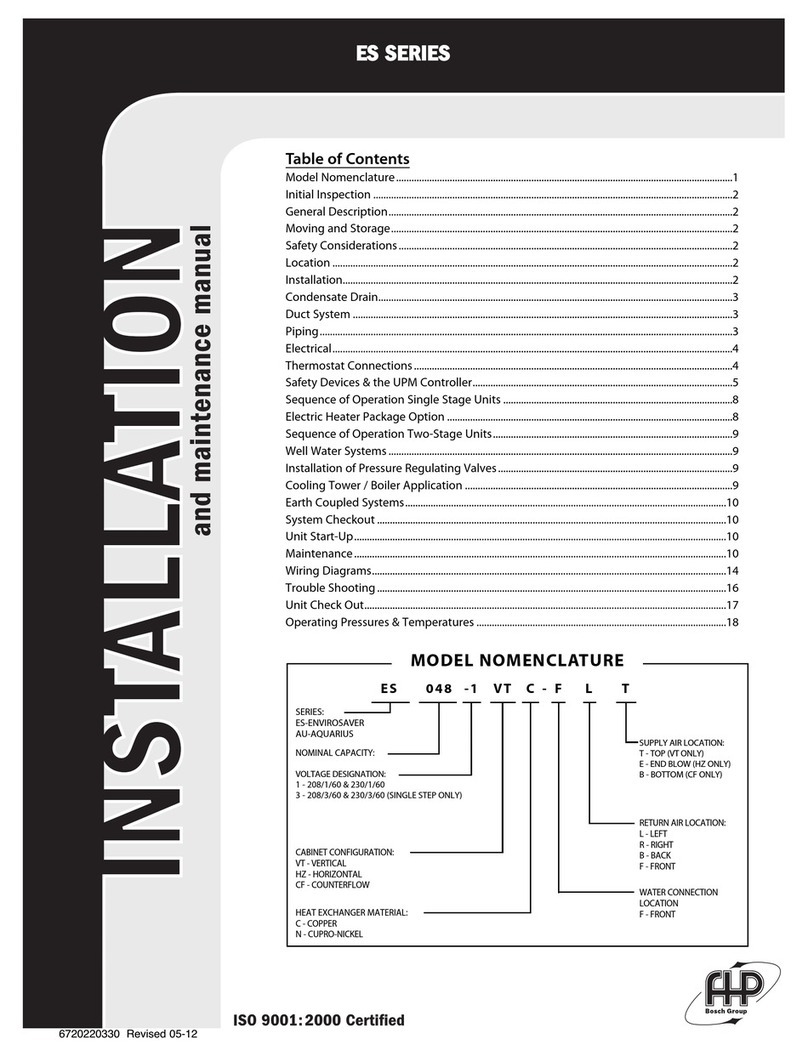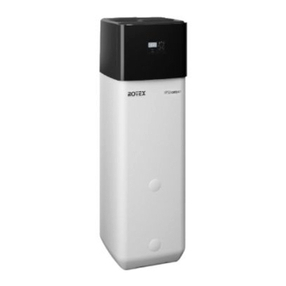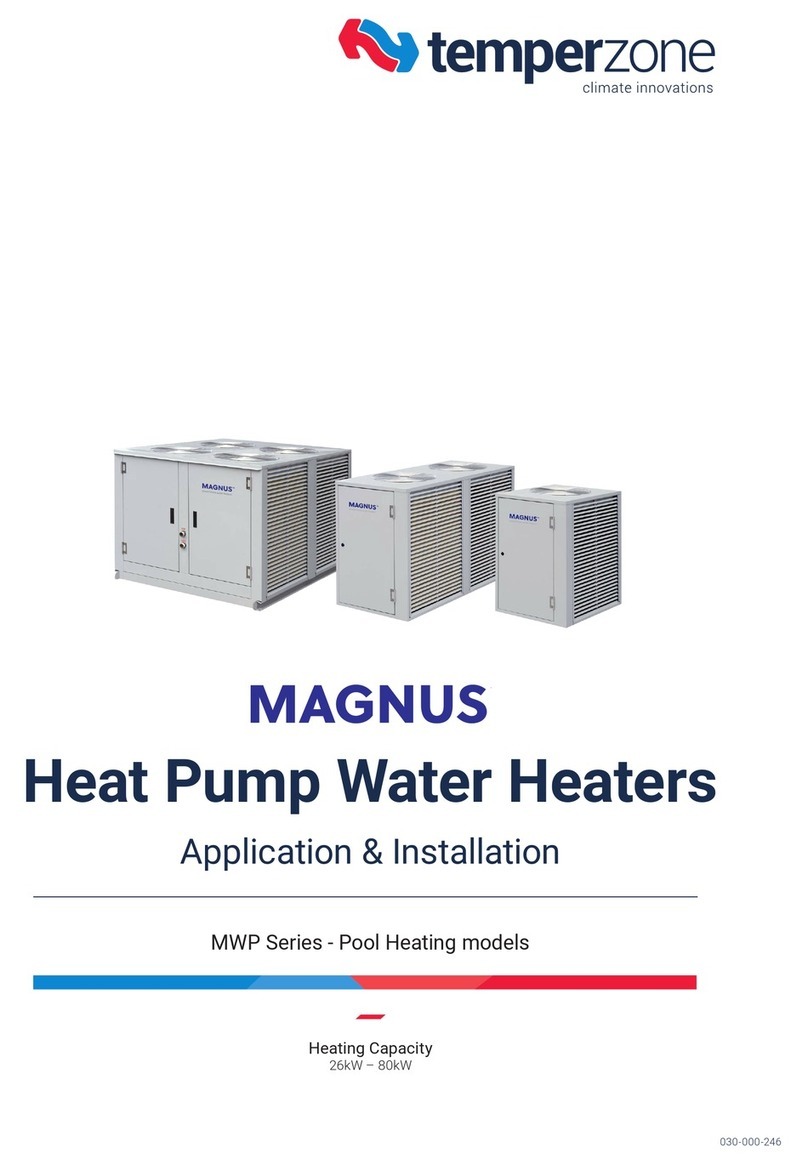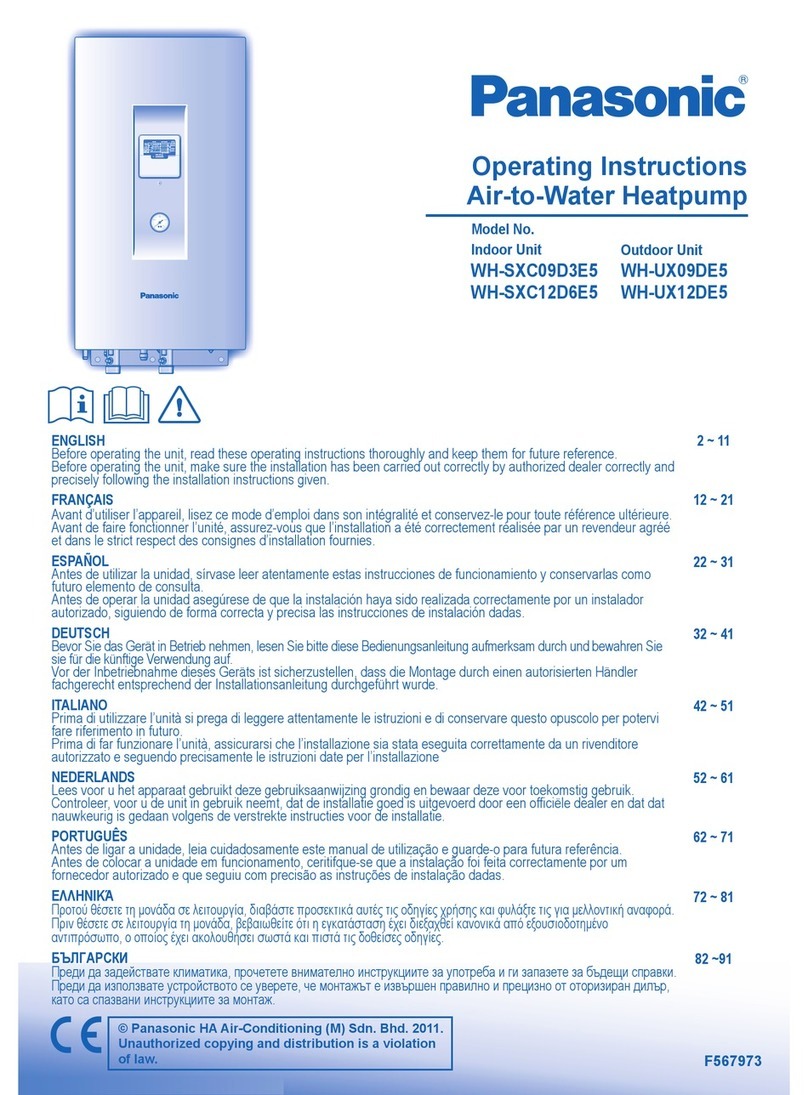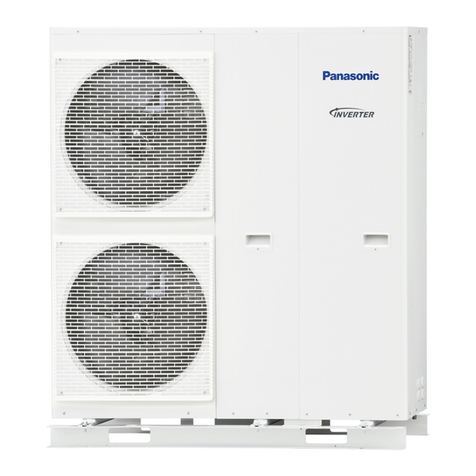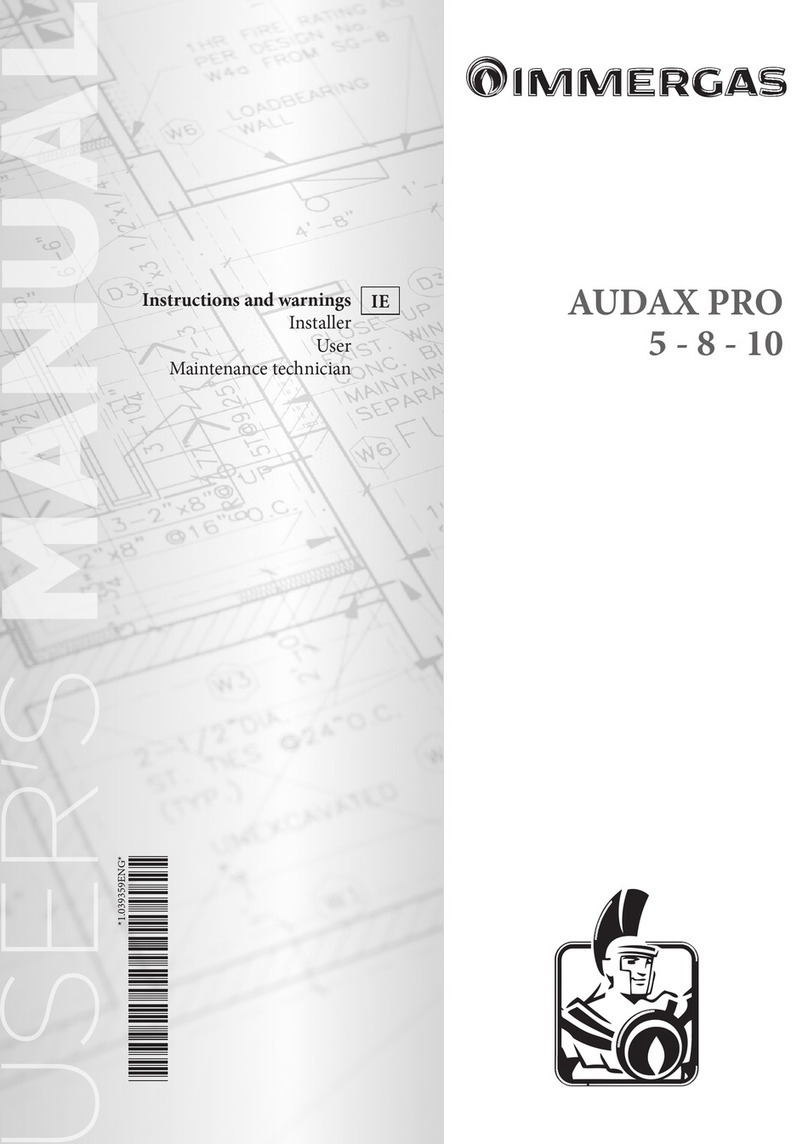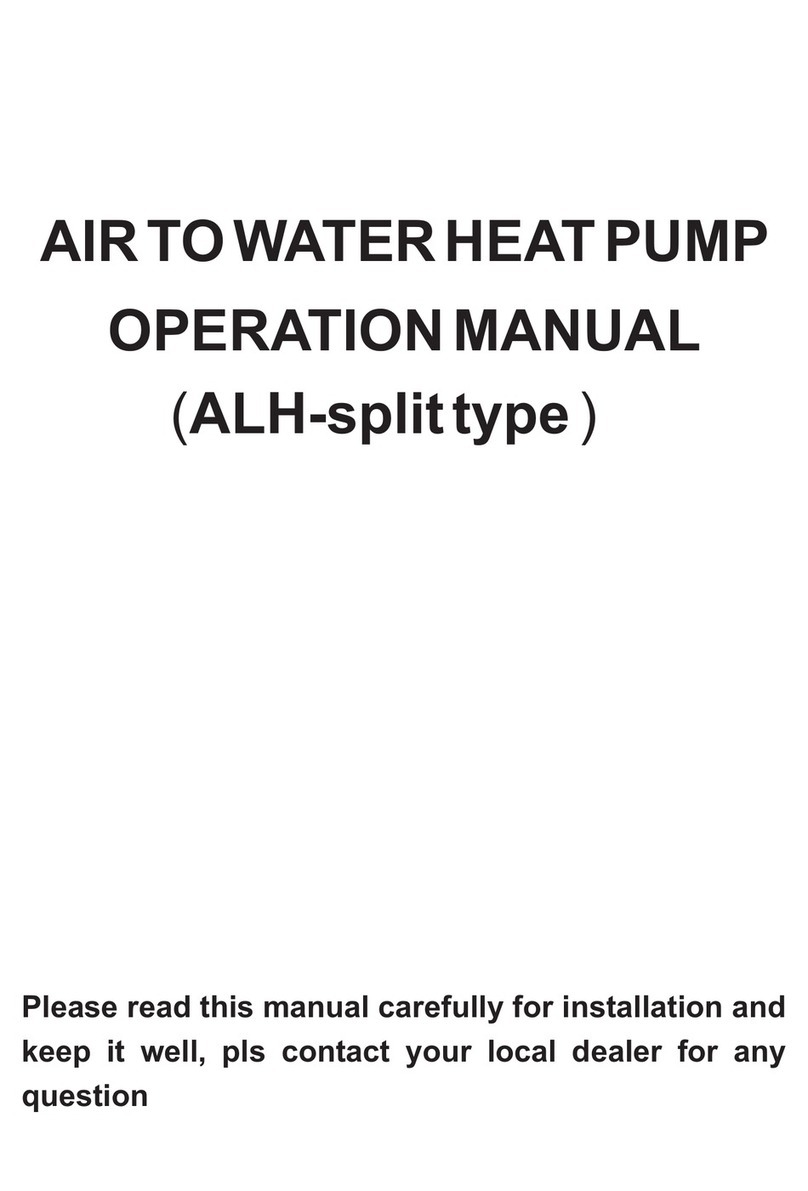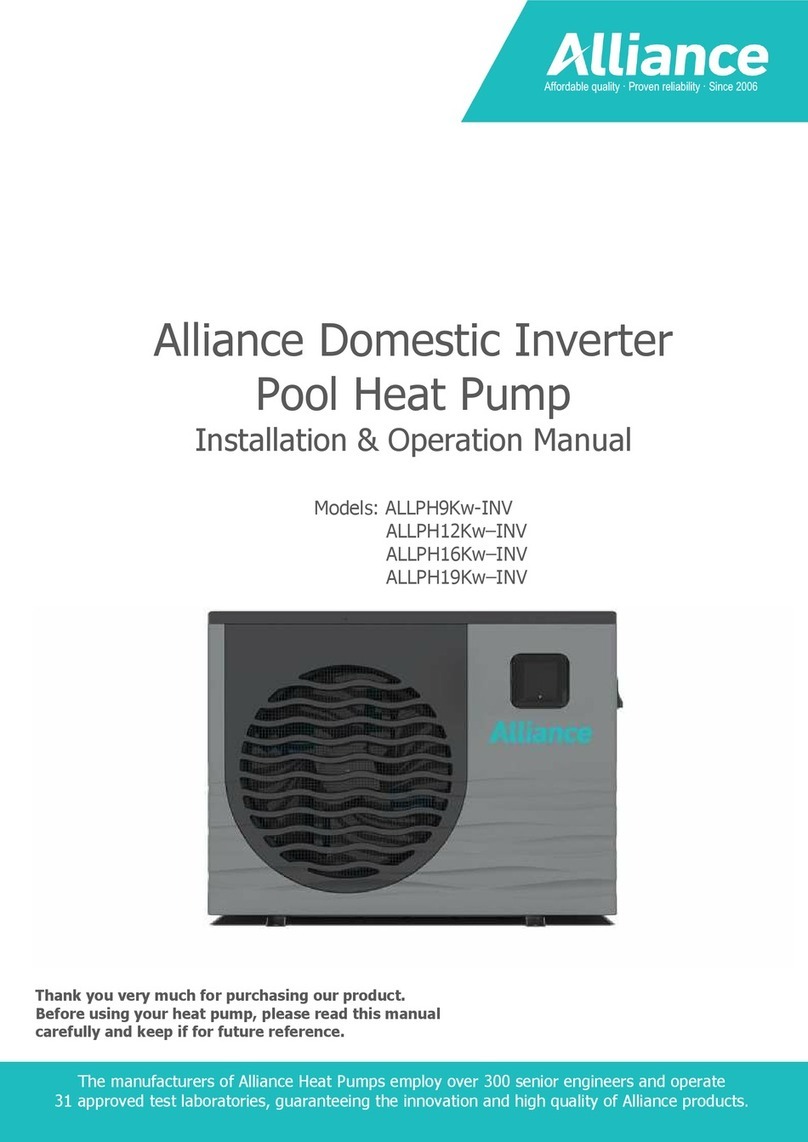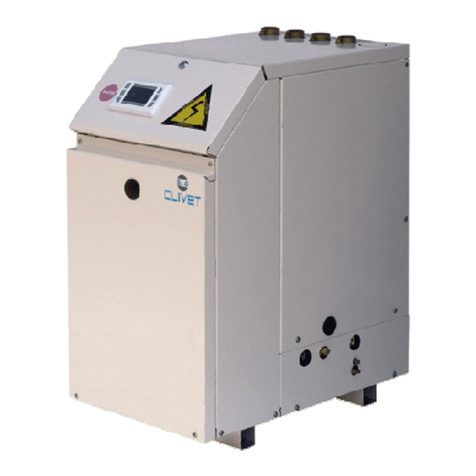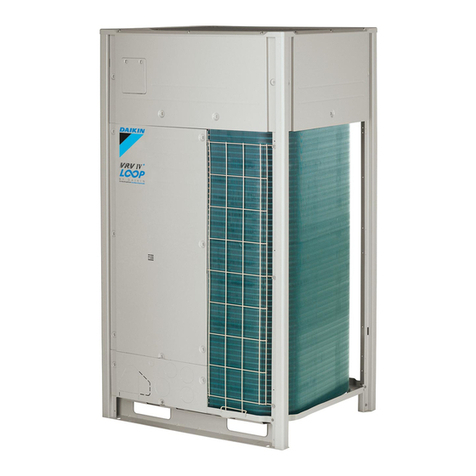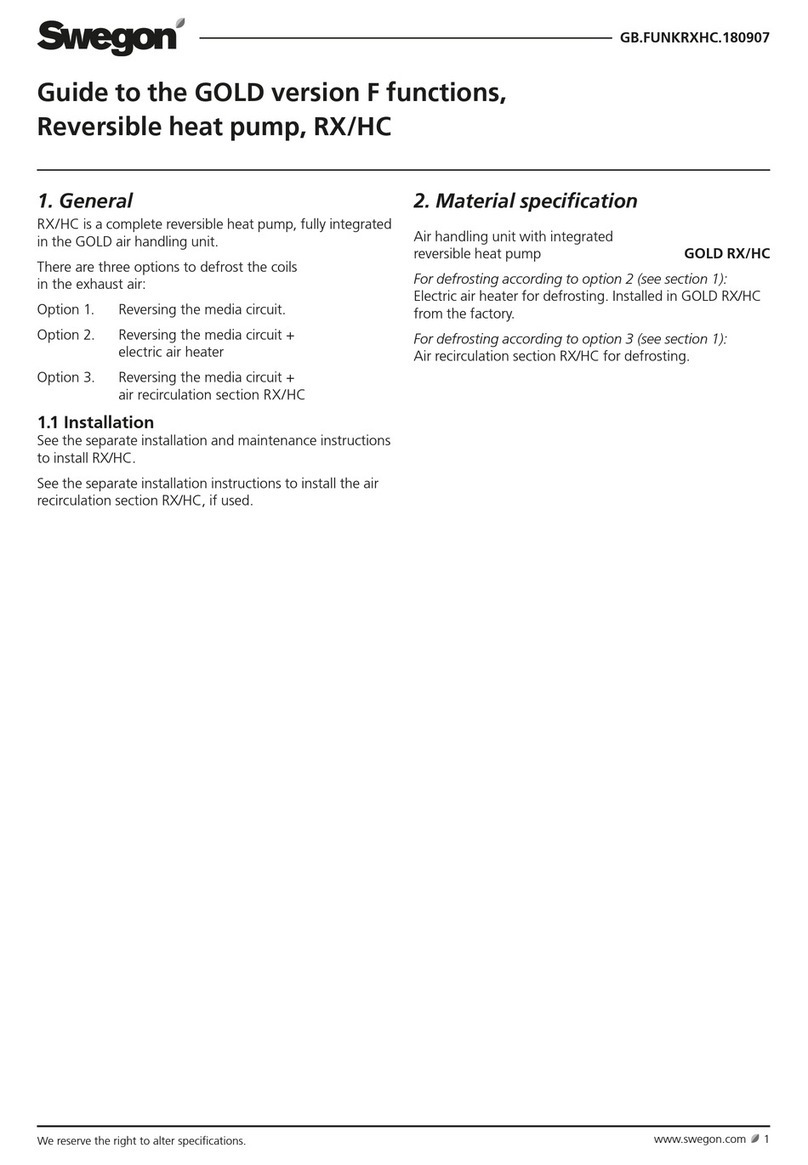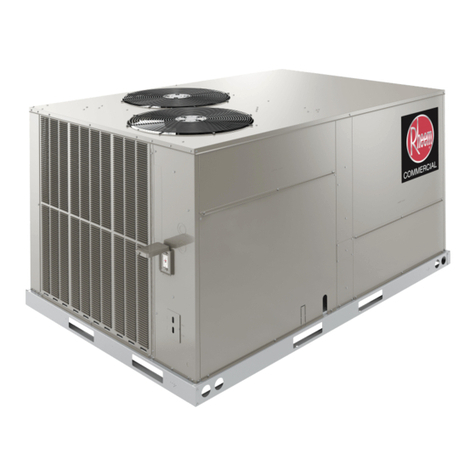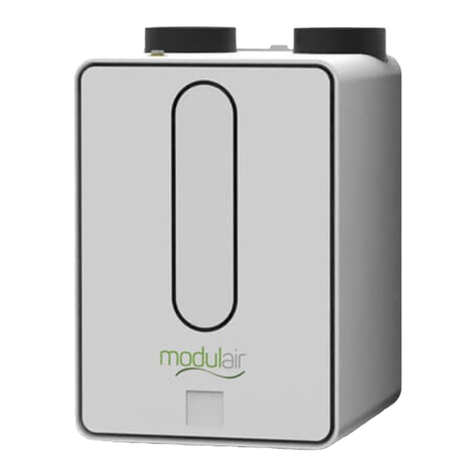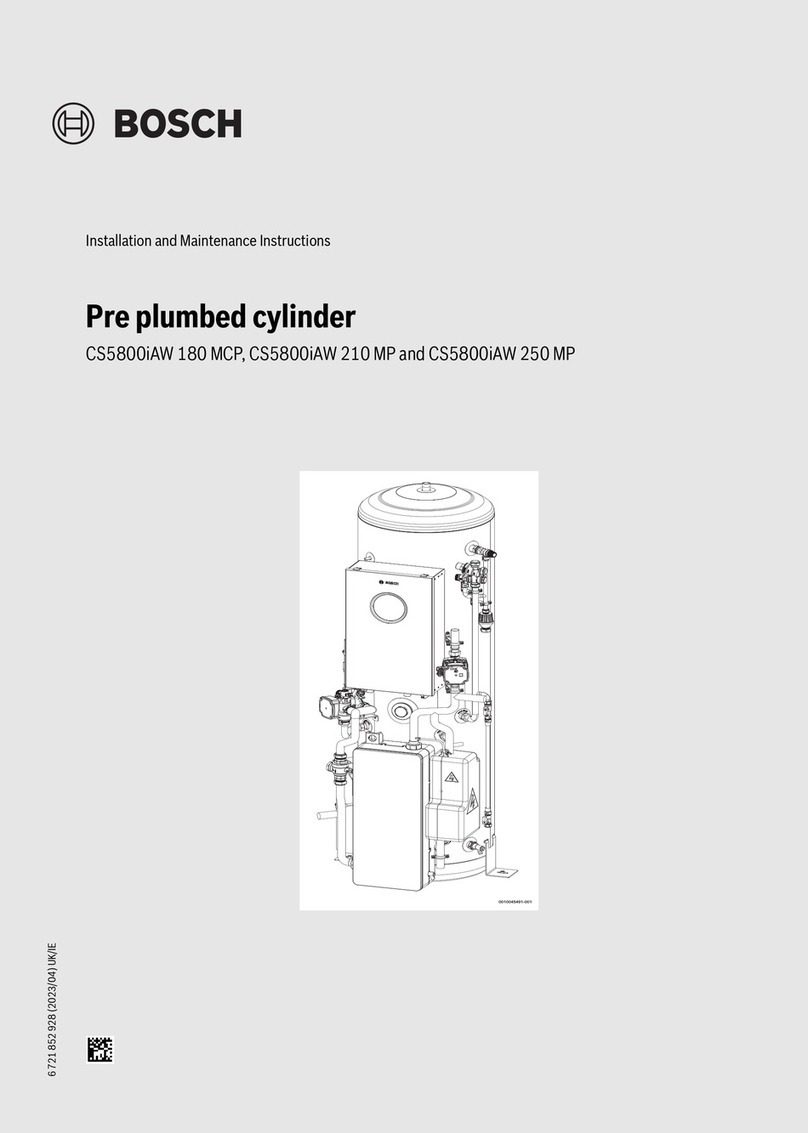
14 |
Installation Instructions
Bosch 18 SEER2 Series Inverter Ducted Packaged Heat Pump - BTC 761703104 A (11.2022)
6 Indoor Fan Motor Function
System Operation and Function
Two Stage Fan Control
The IDP supports two stage fan control which requires a two stage thermostat
(Y1&Y2). When there is a call for Y2, the blower motor will turn to high speed
setting. When there is a call for Y1, the blower motor will turn to low speed setting.
Unit will run at low speed setting when there is only G call. It will run in high speed
setting when there is W/W1/W2 signal (when the electric heat kit is on).
The X13 ECM motor supports 5 speeds. Customer can select the suitable speed by
adjusting the SW6-1 and SW6-2 dip switches. Refer to Airflow Performance Table
(Table 6) for reference airflow. Refer to Fig. 48 for dip switches settings.
If 2 stage thermostat is not available, single stage thermostat may be used, please
refer to Wiring Diagram section for wiring instructions. If Y1 and Y2 are jumped, the
unit will only run in high stage fan speed.
Anti-Cold Air Fan Delay
The Anti-Cold Air Fan Delay function utilizies a sensor (T2) located on the indoor
coil, which prevents the blower from turning on until the coil has reached a certain
temperature. This feature prevents cold air blow during heating operation.
1. When SW6-3 dip switch is set to the "ON" position and the unit is in heating
mode, the Anti-Cold Air Fan Delay function will activate based on the
following entry conditions (all 3 conditions must be met):
a. Indoor Coil Temperature (T2) < 82.4℉
b. Electric heat kit is turned off
c. There is a call for Y1 from thermostat to indoor unit
2. This function will deactivate if ONE OF the following exit conditions are met
OR the system has been operating in heating mode for 15 minutes.
a. T2 ≥ 89.6℉
b. Heater kit is turned on
c. The system is NOT running Heat mode
3. During the heating mode, if one of the exit conditions of Anti-Cold Air is
satisfied, the blower motor will turn on in first stage fan speed.
4. During the heating mode, if all of the entry conditions of Anti-Cold Air are
met and maintained for 120s, the blower motor will change to first stage
speed.
Heating Fan Delay
If SW6-3 dip switch is set to the "OFF" position and the unit is in heating mode, the
blower will operate with a 90 second delay with the fan speed dictated by Y1 or Y2
signal.
Passive Dehumidification (Optional)
IDP has a Passive Dehumidification function which lowers the fan speed (first
stage) with a DH call from the thermostat. This function requires proper DH wiring
from the indoor unit to the thermostat (with a humidistat).
If DH wire is not connected, the unit will still function normally.
7 Ductwork
Field ductwork must comply with the National Fire Protection Association NFPA
90A, NFPA 90B and any applicable local ordinance(s).
WARNING:FIRE HAZARDAND CARBONMONOXIDE
Do not, under any circumstances, connect return ductwork
to any other heat producing device such as fireplace insert,
stove, etc. Unauthorized use of such devices may result in
fire, carbon monoxide poisoning, explosion, personal injury
or property. damage.
Sheet metal ductwork run in unconditioned spaces must be insulated and covered
with a vapor barrier. Fibrous ductwork may be used if constructed and installed
in accordance with SMACNA Construction Standard on Fibrous Glass Ducts.
Ductwork must comply with National Fire Protection Association as tested by
U/L Standard 181 for Class I Air Ducts. Check local codes for requirements on
ductwork and insulation.
Duct system mustbe designed withinthe range ofexternalstatic pressure
the unitis designed to operateagainst. It isimportant that thesystemairflow
be adequate. Make suresupply and return ductwork, grills,special filters,
accessories, etc.are accounted forin totalresistance. Seeairflow performance
tablesinSection 5 of thismanual.
Design the duct system in accordance with “ACCA” Manual “D” Design for
Residential Winter and Summer Air Conditioning and Equipment Selection.
Latest editions are available from: “ACCA” Air Conditioning Contractors of
America, 1513 16th Street, N.W., Washington, D.C. 20036. If duct system
incorporates flexible air duct, be sure pressure drop information (straight
length plus all turns) shown in “ACCA” Manual “D” is accounted for in system.
If an elbow is included in the plenum close to the unit, it must
not be smaller than the dimensions of the supply duct flange on the unit.
NOTICE:
The front flange on the return duct (if connected to the
blower casing) must not be screwed into the area where
the power wiring is located. Drills or sharp screw points
can damage insulation on wires located inside unit.
Secure all ducts to roof curb and building structure on downflow discharge
units. Do not connect ductwork to unit. For horizontal applications, unit is
provided with flanges on the horizontal openings. All ductwork should be
secured to the flanges using proper fasteners for the type of duct used and
tape the duct-to unit joint as required to prevent air leaks.
NOTICE:
When fastening ductwork to the side duct flanges on the
unit, insert the screws through the duct flanges only.
DO NOT insert the screws through the casing. Outdoor
ductwork must be insulated and waterproofed.




















